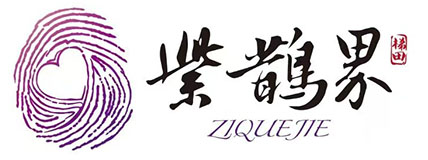
The Ziquejie Terraced Fields, located in the western mountainous area of Xinhua County, are a World Irrigation Heritage Site and a 4A-rated scenic area. The surrounding terraced fields span over 80,000 mu (approximately 5,333 hectares), with the core scenic area covering more than 20,000 mu (approximately 1,333 hectares). In May 2013, it was recognized as one of the first 19 Important Agricultural Heritage Systems in China. It represents a historical and cultural relic where the rice-growing culture of southern China blends harmoniously with the fishing and hunting culture of the Miao and Yao ethnic groups in mountainous regions. Its unique farming methods and natural irrigation system utilizing mountain springs are equally distinctive within the rice-growing culture.

The Ziquejie Terraced Fields have been shaped over 2,000 years, originating in the pre-Qin period and flourishing during the Song and Ming dynasties. They are the collective labor achievement of multiple ethnic groups, including the Miao, Yao, Dong, and Han, throughout generations. They stand as a historical relic where the mountain fishing and hunting culture intertwines with the rice-growing culture, and they represent a prominent cultural landmark of the ancient Meishan region.

At Ziquejie Terraced Fields, the mountains rise as high as the fields, and the water reaches the same heights. There are no reservoirs or artificial ponds, nor is there a need for artificial irrigation. The natural gravity-fed irrigation system is truly awe-inspiring. National water conservancy experts have praised it as comparable to the Dujiangyan Irrigation System and the Lingqu Canal, referring to this self-flowing irrigation system as a "miracle of world water conservancy irrigation engineering."
Mountain spring water continuously flows into the terraced fields. This is the ubiquitous seeping spring water in Ziquejie, a unique water resource. The formation of this gravity irrigation system is as follows: Ziquejie boasts lush forests and abundant vegetation. The mountain is composed of granite, which acts like an impermeable bottom layer of a pond, while its surface consists of sandy soil with excellent water absorption capacity. This creates an excellent water storage and distribution system. According to measurements, all rainfall of 50-60mm can be fully absorbed by the soil, with no surface runoff. Since each cubic meter of soil can absorb 0.2-0.4 tons of water, a vast underground reservoir is formed. With numerous seeping springs serving as the irrigation sources, a unique miracle of a "gravity-fed water irrigation project" in the world has been created. A local proverb goes: "When chaos reigns in the world, this place remains untroubled; when drought strikes the world, this place still yields a harvest."

The clever fusion of the southern rice-growing culture and hunting culture has created a rice-growing cultural relic where humans and nature coexist harmoniously at Ziquejie. Here, the local customs are simple and pure, with Miao and Yao traditions passed down through generations. The Meishan folk songs are uniquely charming and well-known among all ages. The Meishan cuisine and martial arts boast distinct styles. The traditional residences in Ziquejie are antique and full of character. Folk performances such as the Grass Dragon Dance and the Nuo Mask Lion Dance are primitive, mysterious, and full of charm.

The Ziquejie Terraced Fields are constructed along the mountain contours, varying in size from small as saucers to large as basins, long as ribbons, and curved as crescents. They present a myriad of shapes and forms, resembling celestial pools and earthly paradises.
The cultural heritage around Ziquejie is profound, with abundant cultural resources. Folk songs, ballads, and love songs are widely sung among the people. The Dragon and Lion Dance and Grass Dragon Dance exhibit unique styles, while Miao and Yao customs remain unchanged. The culinary culture is also well-known, with green tea, cured meat, tofu balls, frozen fish, glutinous rice cakes, sweet wine, taro, dried bamboo shoots, fern, coix seed, and gastrodia elata enjoying a long-standing reputation. It can be described as a place with "simple and ancient folk customs, abundant resources, and prosperity." These elements have laid a solid cultural foundation for tourism development in the area.

On the backside of Ziquejie, there is a vast base of honeysuckle flowers spanning tens of thousands of mu, as well as cultural landscapes such as the ruins of 48 Yao ethnic villages.

The terraced fields make use of the region's topographical, geological, and soil characteristics, adapting to the local conditions by embedding them into the hillsides and utilizing the seepage spring water for irrigation. Numerous seepage points on the hillsides serve as irrigation sources, with each small water source having its own small irrigation system. This system consists of soil pores, rock fissures, micro-ditches, and terraced fields, ensuring smooth water flow. The terraced fields scattered across the mountains and slopes are composed of countless irrigation blocks. The length and width of each terraced field, as well as the height difference between each terrace level, are adapted to the local conditions. The width of the fields generally ranges from 1 to 3 meters, with a height difference of 1 to 1.5 meters, which is conducive to stability and water retention. The size of each irrigation system is determined by the amount of seepage water and the slope of the terrain, ensuring an adequate water supply. During heavy rains, there are no rapid flows. Meticulous construction of field ridges and careful management ensure that the soil and water of the terraced fields do not erode. Additionally, for the irrigation of terraced fields on low mountain tops, bamboo or plastic pipes are buried in the soil to draw water from higher elevations, forming small underground inverted siphons. Another method utilizes the height difference of mountain streams, diverting the water into ditches excavated along the mountainside for step-by-step irrigation of the terraced fields. The layout and irrigation system of these terraced fields are truly ingenious.

